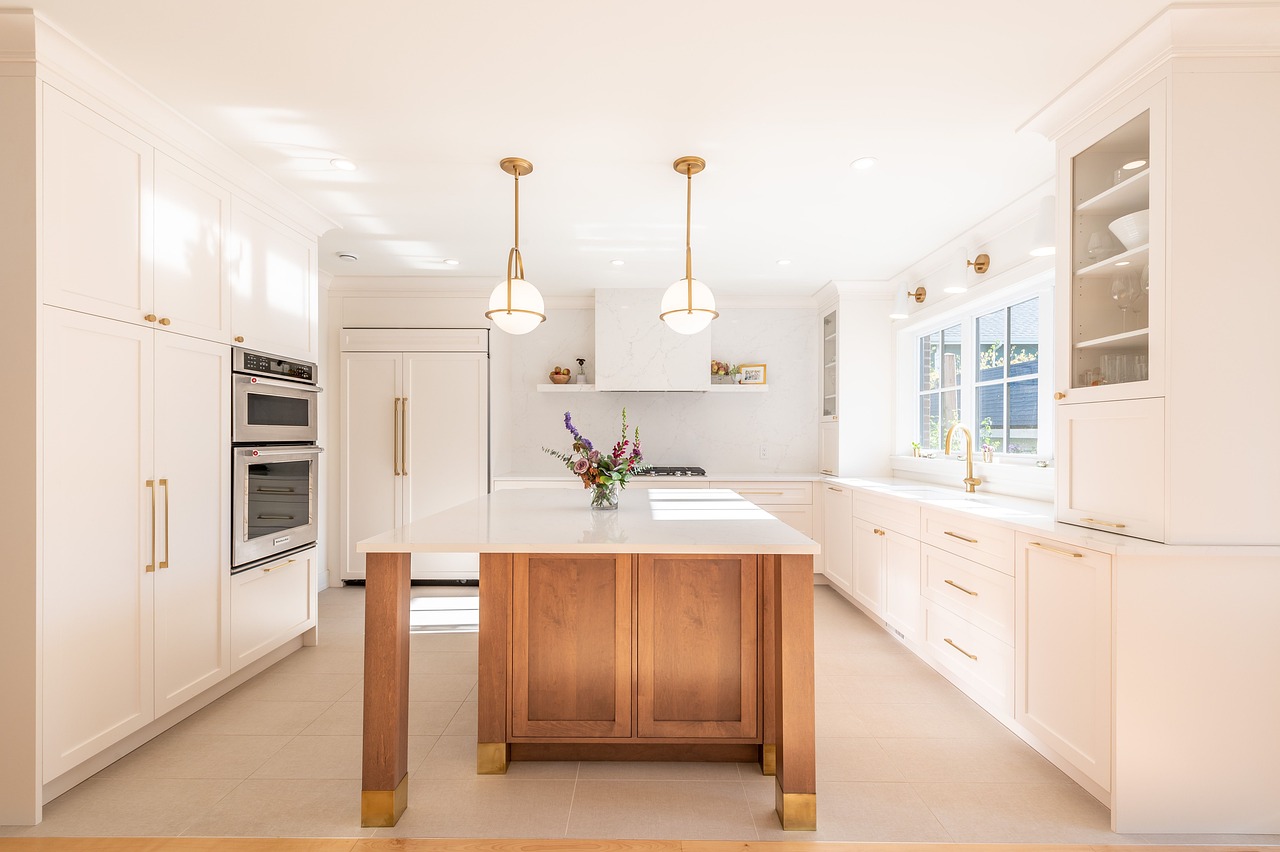Photo by rdsremovalanalytic on Pixabay
## Introduction to Kitchen Layout
As a passionate home cook, I have always believed that the kitchen is the heart of the home. It is a space where creativity, innovation, and comfort come together to create culinary masterpieces. But have you ever wondered what makes a kitchen truly exceptional? The answer lies in its layout. The kitchen layout is the foundation upon which every cooking adventure is built. It is the key ingredient determining your culinary endeavors’ efficiency, functionality, and overall experience.
The Importance of a Good Kitchen Layout
A well-designed kitchen layout is important for a seamless culinary experience. It enhances the efficiency of your cooking process and ensures that the space is optimized for your specific needs. A thoughtfully planned kitchen layout can save you time, energy, and frustration by maximizing workflow and minimizing unnecessary movements. Whether a seasoned or amateur chef, a well-designed kitchen layout can elevate your cooking experience.
Considerations for Designing an Effective Kitchen Layout
Designing a kitchen layout is not a one-size-fits-all approach. It needs careful consideration of many factors to achieve a final design that meets your requirements. First and foremost, you need to assess the available space and determine how it can be best utilized. Consider your kitchen’s size and shape and the location of windows, doors, and electrical outlets. Additionally, consider your cooking style, storage needs, and the number of people using the kitchen. Considering the factors above, you can design a kitchen layout tailored to your preferences and lifestyle.
Different Types of Kitchen Layouts
There are several kitchen layouts, each with unique advantages and disadvantages. The most common types include the galley kitchen, L-shaped kitchen, U-shaped kitchen, and open-concept kitchen. The galley kitchen comprises two parallel countertops that maximize efficiency in a limited space. The L-shaped kitchen offers ample counter space and easy movement between work zones. The U-shaped kitchen provides large storage and workspace, making it ideal for avid cooks. Lastly, the open-concept kitchen combines the kitchen and living areas, creating a spacious and friendly environment.
Pros and Cons of Popular Kitchen Layouts
Each kitchen layout has advantages and disadvantages. The galley kitchen, for instance, is efficient and compact but may lack counter space and storage. The L-shaped kitchen offers flexibility and easy traffic flow but may not be suitable for larger families. The U-shaped kitchen provides ample storage and workspace but requires more square footage. The open-concept kitchen promotes a sense of spaciousness and sociability but can be challenging to keep clean and organized. By understanding the advantages and disadvantages of each layout, you can make an informed and right decision that best suits your needs.
Designing a Functional and Efficient Kitchen Layout
Creating a functional and efficient kitchen layout is about optimizing the workflow and ensuring everything is within easy reach. Start by considering the “kitchen work triangle,” which includes the sink, stove, and refrigerator. These three elements should form a triangle shape, allowing efficient movement between them. Next, prioritize storage by incorporating cabinets, drawers, and pantry spaces that are easily accessible. Consider the placement of appliances to minimize unnecessary movements and maximize convenience. Finally, ensure ample counter space for food preparation and the lighting is strategically placed to provide adequate illumination.
Tips for Optimizing Your Kitchen Layout
To further optimize your kitchen layout, consider implementing the following tips:
- Maximize storage: Utilize vertical space by installing tall cabinets and shelves. Use drawer organizers and dividers to keep items organized and easily accessible.
- Create designated zones: Divide your kitchen into cooking, cleaning, and food preparation zones. This will streamline your workflow and make the cooking process more efficient.
- Invest in quality appliances: Choose energy-efficient, durable, and suited to your cooking needs. This will enhance both the functionality and aesthetics of your kitchen.
- Consider ergonomics: Choose countertops and cabinetry that are at a comfortable height for you. This will reduce strain and make your cooking experience more enjoyable.
- Add personal touches: Incorporate elements that reflect your style and make the kitchen warm and inviting. This could include artwork, plants, or personalized decor.
Kitchen Layout Mistakes to Avoid
While it is important to know what to do when designing a kitchen layout, it is equally important to know what not to do. Avoid these common mistakes for a successful kitchen layout:
- Insufficient counter space: Inadequate counter space can hinder your cooking process and make it challenging to prepare multiple dishes simultaneously. Make sure you allocate ample space for food preparation and various other tasks.
- Poor traffic flow: A congested and cramped kitchen can make cooking a frustrating experience. Allow ample space between countertops and appliances to ensure easy movement and accessibility.
- Inadequate storage: Lack of storage can lead to cluttered countertops and difficulty finding necessary items. Plan for sufficient storage space, including cabinets, drawers, and pantry areas.
- Improper lighting: Insufficient or poorly placed lighting can make it difficult to see while cooking. Incorporate a combination of general, task, and ambient lighting to ensure adequate illumination throughout the kitchen.
- Neglecting ventilation: A kitchen needs proper ventilation to remove cooking odors, heat, and steam. Installing a range hood or exhaust fan will help maintain a clean and comfortable environment.
Hiring a Professional for Kitchen Layout Design
Designing a kitchen layout can be complex, and sometimes it is best left to the professionals. Hiring an experienced kitchen designer can ensure that your vision becomes a reality. They have the expertise to assess your space, understand your needs, and create a functional and aesthetically pleasing kitchen layout. A professional can also help you navigate various design options, material choices, and budget considerations. Working with a kitchen designer can save time, avoid costly mistakes, and finally achieve the kitchen of your dreams.
Conclusion: The Impact of a Well-Planned Kitchen Layout on Your Culinary Experience
In conclusion, a well-planned kitchen layout is the key ingredient to a seamless culinary experience. It enhances efficiency and functionality and reflects your style and preferences. By considering factors such as space, cooking style, and storage needs, you can create a kitchen layout tailored to your specific requirements. Whether you choose a galley kitchen, L-shaped kitchen, U-shaped kitchen, or open-concept kitchen, each layout has advantages and disadvantages. You can create a stylish, beautiful and functional kitchen by optimizing your kitchen layout, avoiding common mistakes, and considering professional help when needed. So, take the time to design your kitchen layout thoughtfully and unlock the potential for unforgettable culinary adventures in the heart of your home.



